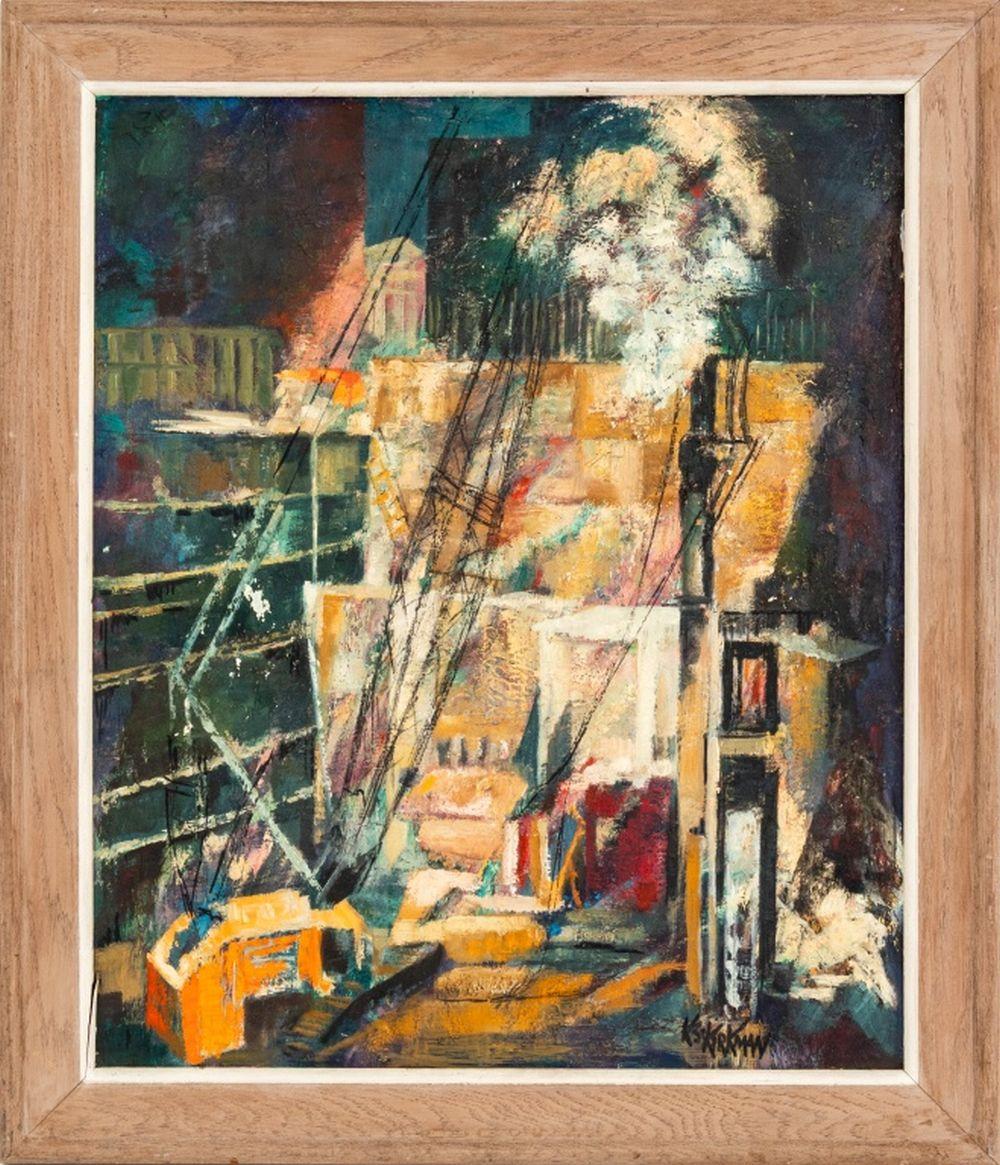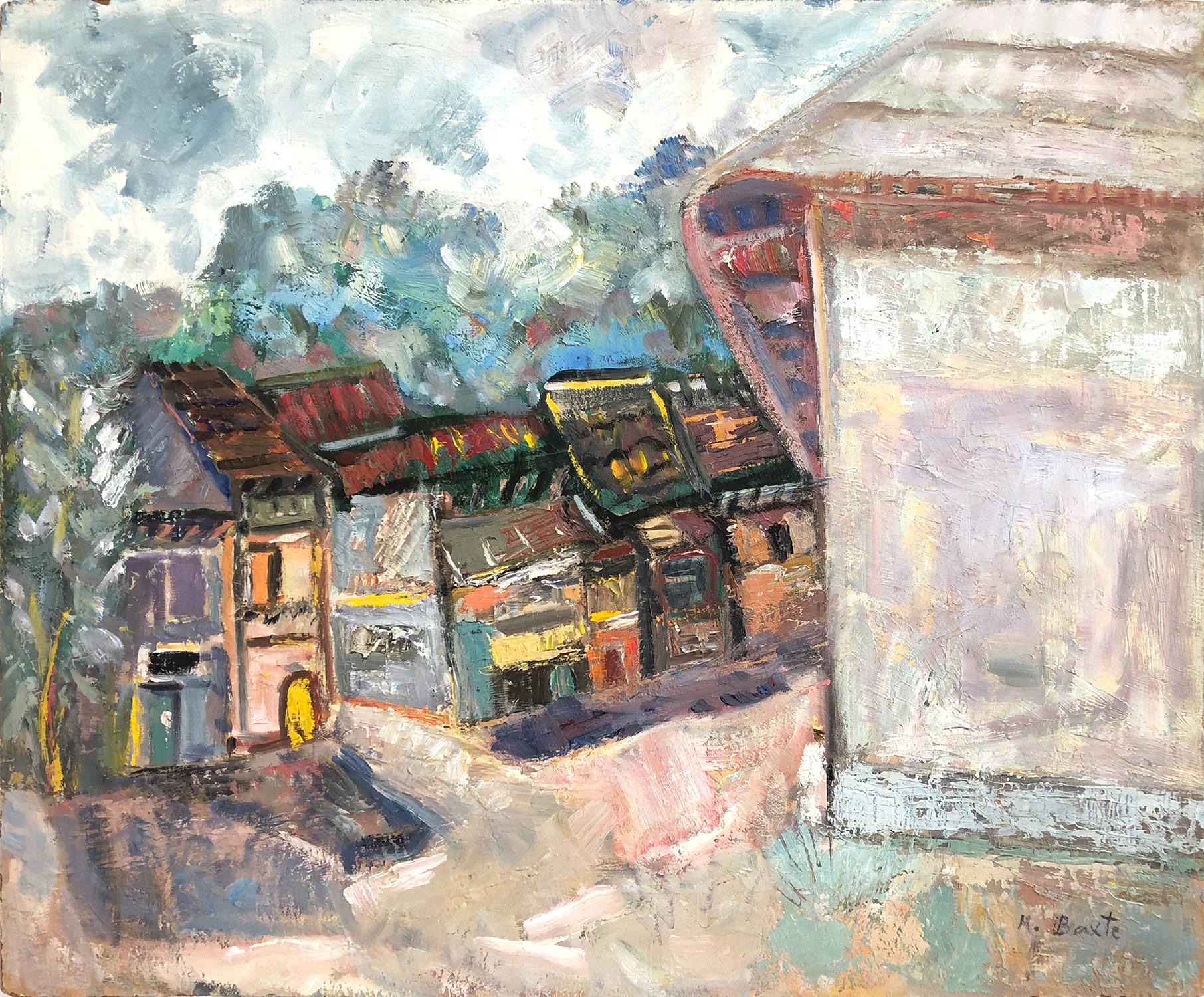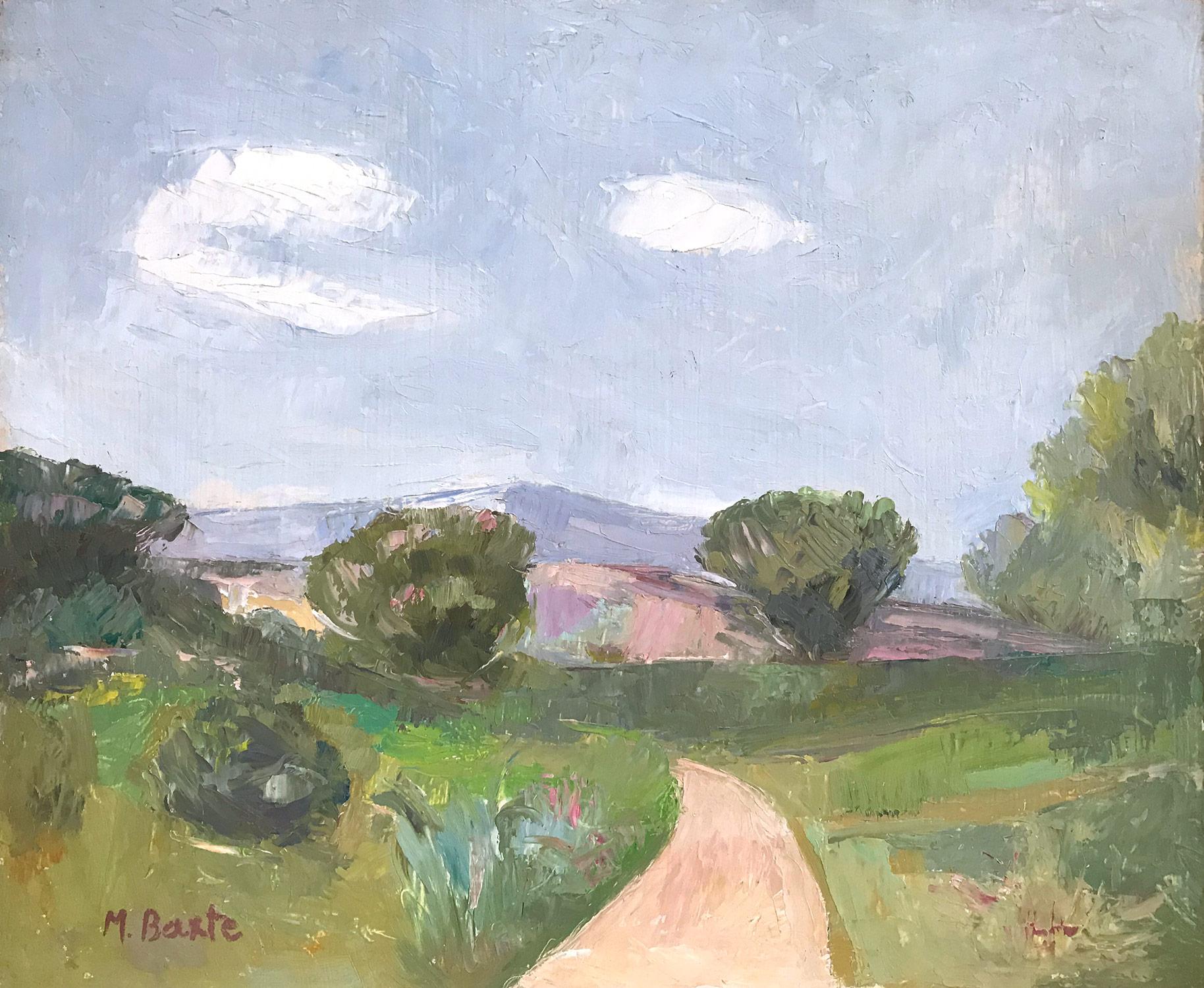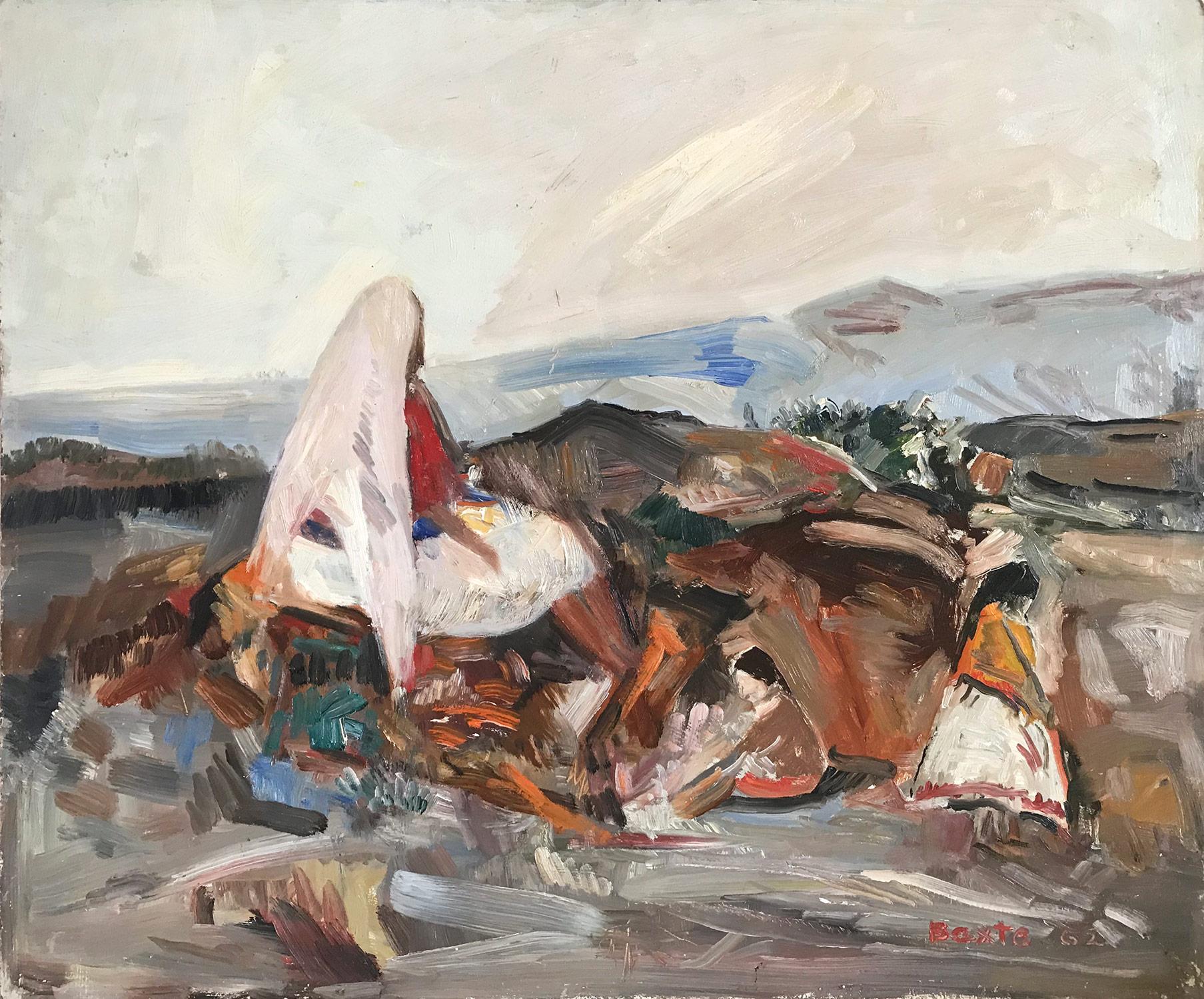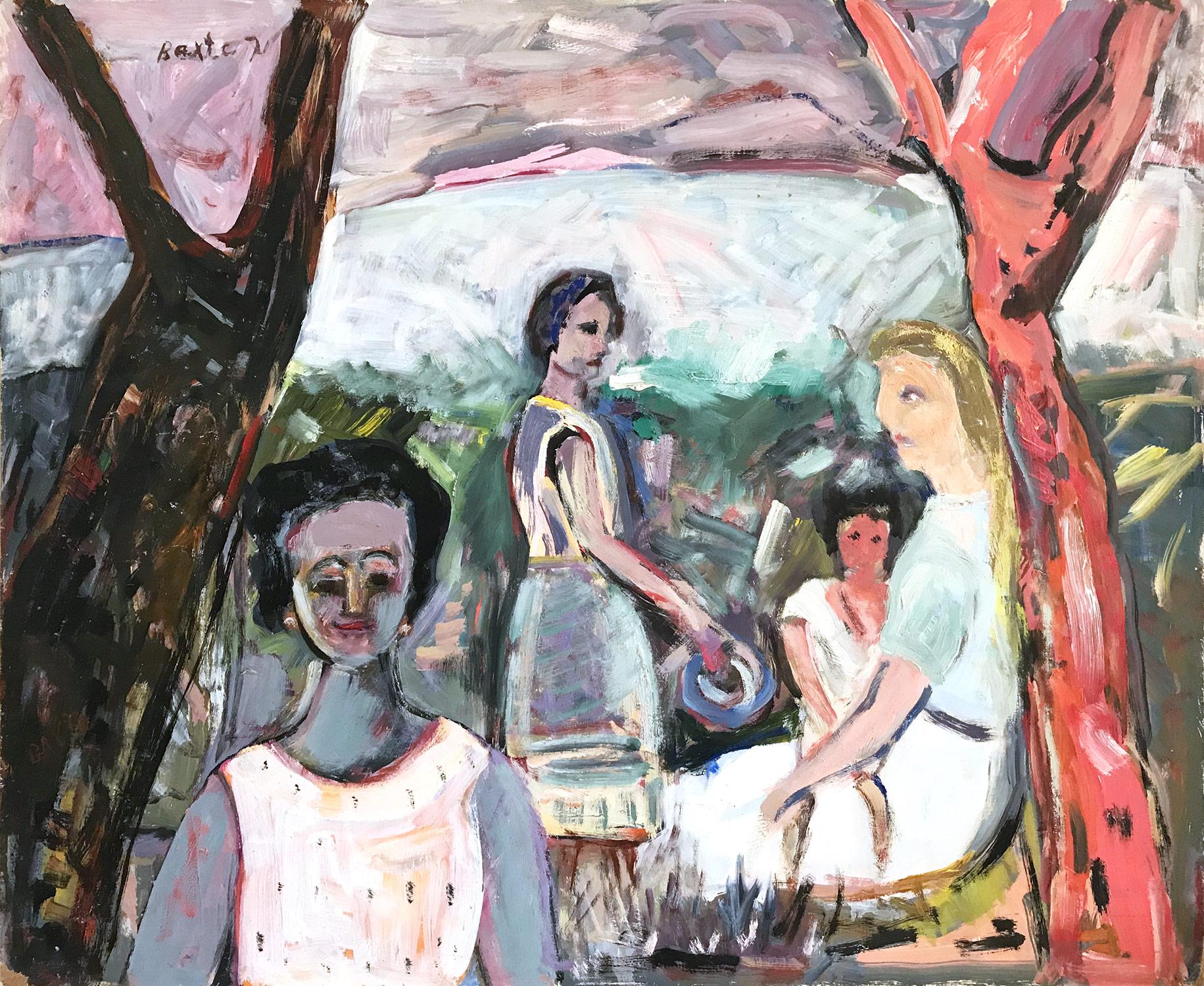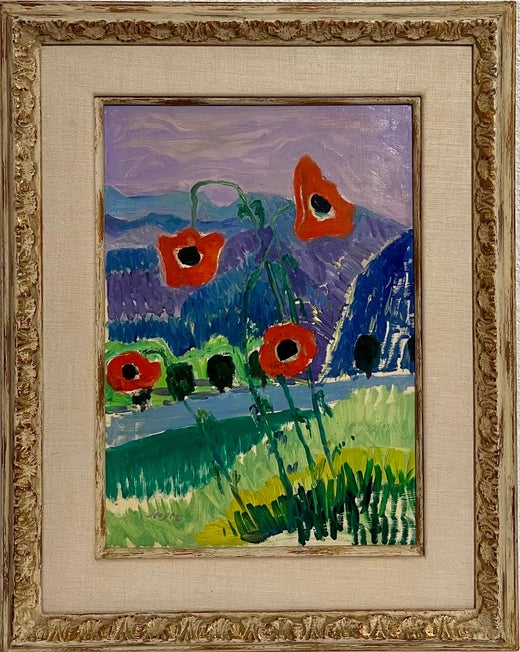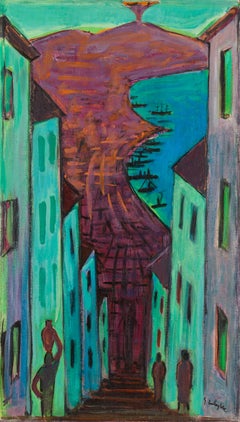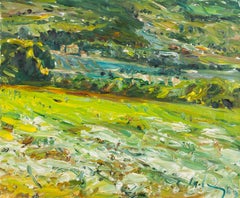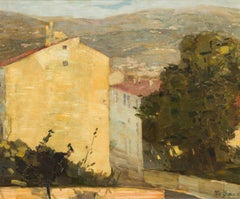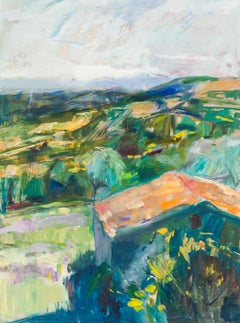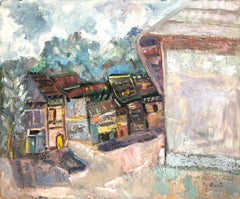Items Similar to Café
Want more images or videos?
Request additional images or videos from the seller
1 of 8
Frederick B. SergerCafé
On Hold
$6,878.81
On Hold
£5,086.75
On Hold
€5,752
On Hold
CA$9,519.24
On Hold
A$10,594.14
On Hold
CHF 5,515.56
On Hold
MX$127,935.54
On Hold
NOK 69,170.22
On Hold
SEK 65,335.62
On Hold
DKK 43,811.14
About the Item
Frederick B. Serger (1889 - 1965) studied at the art schools in Brno and Vienna and later in Munich. After the First World War he went to Paris where he continued his art studies and soon joined the Parisian movement "Ecole de Paris". He subsequently began to exhibit regularly in Warsaw and Krakow, as well as at the Paris Salon de Tuilleries and the famous Salon d'Automne. It is worth mentioning the solo exhibition Serger had in 1936 at Salon and at the important modern gallery „Bernheim-Jeune“Salon in Paris. In 1941, he set up a studio in Manhattan and began a long career of exhibitions in New York.
- Creator:Frederick B. Serger (1889-1965, American)
- Dimensions:Height: 25.2 in (64 cm)Width: 20.87 in (53 cm)
- Medium:
- Movement & Style:
- Period:
- Condition:
- Gallery Location:Wien, AT
- Reference Number:1stDibs: LU1782211061942
Frederick B. Serger
Frederick B. Serger (1889-1965) was an influential Polish-born painter known for his contributions to modern art. Born in Lwów, then part of the Austro-Hungarian Empire (now Lviv, Ukraine), Serger pursued his artistic education in Vienna and Munich, where he developed a distinctive style that melded traditional techniques with modernist sensibilities. His work, characterized by its vivid color palette and dynamic compositions, often depicted scenes of rural life, landscapes, and portraits, reflecting his deep connection to his heritage and the changing times. In the 1920s and 1930s, Serger's art gained considerable recognition in Europe, and he exhibited extensively in major cities including Paris, Berlin, and Vienna. The advent of World War II forced him to flee Europe, and he eventually settled in the United States. In America, Serger continued to paint and exhibit, adapting to his new environment while maintaining the unique style that had defined his earlier works. Serger's legacy lies in his ability to bridge European and American art traditions, creating a body of work that remains significant in the study of 20th-century art. His paintings are held in various private and public collections, serving as a testament to his enduring influence and artistic vision.
About the Seller
5.0
Vetted Professional Seller
Every seller passes strict standards for authenticity and reliability
Established in 1973
1stDibs seller since 2022
13 sales on 1stDibs
Typical response time: 4 hours
- ShippingRetrieving quote...Shipping from: Wien, Austria
- Return Policy
Authenticity Guarantee
In the unlikely event there’s an issue with an item’s authenticity, contact us within 1 year for a full refund. DetailsMoney-Back Guarantee
If your item is not as described, is damaged in transit, or does not arrive, contact us within 7 days for a full refund. Details24-Hour Cancellation
You have a 24-hour grace period in which to reconsider your purchase, with no questions asked.Vetted Professional Sellers
Our world-class sellers must adhere to strict standards for service and quality, maintaining the integrity of our listings.Price-Match Guarantee
If you find that a seller listed the same item for a lower price elsewhere, we’ll match it.Trusted Global Delivery
Our best-in-class carrier network provides specialized shipping options worldwide, including custom delivery.More From This Seller
View AllTaormina
By Erich Waske
Located in Wien, 9
Deling with the work of Erich Waske today, one encounters first of all a number of reasons why this outstanding artist has fallen into such undeserved oblivion. In addition to the de...
Category
20th Century Expressionist Landscape Paintings
Materials
Oil, Canvas
$8,466
Bachlandschaft
Located in Wien, 9
In the flyleaf of the catalog published on the occasion of his exhibition in the Gallery Pels-Leusden in Berlin in 1982, there is the following dedication:
“For the very gifted Rolan...
Category
21st Century and Contemporary Modern Landscape Paintings
Materials
Canvas, Oil
Vorstadthäuser in baumbestandener Straße
Located in Wien, 9
Als Sohn eines Lehrers wurde Willi Geiger 1878 in Landshut geboren. 1898–99 besuchte er die Münchner Kunstgewerbeschule, anschließend die Technische Hochschule, an der er sein Staats...
Category
1910s Landscape Paintings
Materials
Oil
Toscana, Ginster
By Susanne Purviance
Located in Wien, 9
Susanne Purviance wurde 1954 in Linz geboren. Sie absolvierte ein künstlerisches Studium zwischen 1974 und 1979 an der Hochschule für künstlerische und industrielle Gestaltung in Lin...
Category
21st Century and Contemporary Contemporary Landscape Paintings
Materials
Oil
Lacoste IV
Located in Wien, 9
Im Vorsatzblatt des anlässlich seiner Ausstellung in der Galerie Pels-Leusden in Berlin im Jahre 1982 erschienenen Kataloges findet sich folgende Widmung:
“Für den sehr begabten Rola...
Category
21st Century and Contemporary Landscape Paintings
Materials
Oil
Wien Van
Located in Wien, 9
Born on May 31, 1966 in Vienna, lives and works in Vienna.
Work
Nothing could describe the work of Elke Schönberger more incorrectly than the term “photorealism”. Instead of trying...
Category
2010s Landscape Paintings
Materials
Oil
$5,979
You May Also Like
"Urban Renewal"
Located in Astoria, NY
Katherine S. Kirkman (American, XX-XXI), "Urban Renewal", Oil on Masonite, signed lower right, titled and signed to verso, wood frame. Image: 23.5" H x 19.5" W; frame: 26" H x 24" W....
Category
Late 20th Century Expressionist Landscape Paintings
Materials
Masonite, Oil
"Mexican Landscape Water Scene with Figures and Boat" Expressionistic Style
By Michael Baxte
Located in New York, NY
A strong modernist oil painting depicted in the Mid Century by Russian painter Michael Baxte. Mostly known for his abstracted figures on canvas or street scenes, this piece is a wond...
Category
Mid-20th Century Expressionist Landscape Paintings
Materials
Oil, Masonite
"Colorful Mexican Village Scene" Expressionistic Oil Painting on Masonite
By Michael Baxte
Located in New York, NY
A strong modernist oil painting depicted Circa 1960 by Russian painter Michael Baxte. Mostly known for his abstracted figures on canvas or street scenes, this piece is a wonderful representation of his bold still life paintings, with expressive use of color, shape, and form. Later in his career, Baxte explores Expressionism, infusing both European and North American stylistic trends. This piece is from later in his career, but we can feel this underlying style throughout.
Art measures 18 x 21.75 inches
Michael Posner Baxte was born in 1890 in the small town of Staroselje Belarus, Russia. For the first half of the 19th century it was a center of the Chabad movement of Hasidic Jews, but this group was gone by the middle of the 19th century. By the time the Baxte family immigrated to the United States at the beginning of the 20th century, the Jewish population numbered only on the hundreds. The native language of the Baxte family was Yiddish. It is likely that the death of Michael Baxte’s father triggered the family’s immigration. Three older brothers arrived in New York between 1903 and 1905. Michael and his mother, Rebecca, arrived in 1907. By 1910 Michael, his mother, and brother, Joseph, were living in New Orleans and may have spent some time on a Louisiana plantation. Around 1912, Michael Baxte returned to Europe to study the violin. In 1914 he, his mother, and Joseph moved to New York City.
Meanwhile, in Algeria, a talented young woman painter, Violette Mege, was making history. Since for the first time, a woman won the prestigious Beaux Art competition in Algeria. At first, the awards committee denied her the prize but, with French government intervention, Mege eventually prevailed. She won again 3 years later and, in 1916, used the scholarship to visit the United States of America. When Violette came to New York, she met Baxte, who was, by then, an accomplished violinist, teacher, and composer. Baxte’s compositions were performed at the Tokyo Imperial Theater, and in 1922 he was listed in the American Jewish Yearbook as one of the prominent members of the American Jewish community. As a music teacher he encouraged individual expression. Baxte stated, “No pupil should ever be forced into imitation of the teacher. Art is a personal experience, and the teacher’s truest aim must be to awaken this light of personality through the patient light of science.”
By 1920 Michael Baxte and Violette Mege were living together in Manhattan. Although they claimed to be living as husband and wife, it seems that their marriage did not become official until 1928. On their “unofficial” honeymoon around 1917, in Algiers, Baxte confided to her his ambition to paint. There and later in New Mexico where the wonderful steeped sunlight approximates the coloring of Algiers, she taught him his heart’s desire. He never had any other teacher. She never had any other pupil. For ten years she devoted all her time, energy, and ambition to teaching, encouraging, inspiring him. Then in 1928, their mutual strivings were rewarded, as his works were being chosen as one of the two winners in the Dudensing National Competition for American Painters. Out of 150 artists from across the country participated in the Dudensing, and Michael Posner Baxte and, Robert Fawcett, were the winners.
In his 1924 naturalization application, he indicated that he was sometimes known as “Michael Posner Baxte.” One of the witnesses to his application was Bernard Karfiol, a Jewish American artist. That’s when Michael may...
Category
1960s Expressionist Landscape Paintings
Materials
Oil, Masonite
"Countryside Landscape Hills Scene with Path" Expressionistic Style Oil Painting
By Michael Baxte
Located in New York, NY
A strong modernist oil painting depicted in the Mid Century by Russian painter Michael Baxte. Mostly known for his abstracted figures on canvas or street scenes, this piece is a wonderful representation of his landscapes with expressive use of color, shape, and form. Later in his career, Baxte explores Expressionism, infusing both European and North American stylistic trends.
Art measures 15 x 18 inches
Michael Posner Baxte was born in 1890 in the small town of Staroselje Belarus, Russia. For the first half of the 19th century, it was a center of the Chabad movement of Hasidic Jews, but this group was gone by the middle of the 19th century. By the time the Baxte family immigrated to the United States at the beginning of the 20th century, the Jewish population numbered only on the hundreds. The native language of the Baxte family was Yiddish. It is likely that the death of Michael Baxte’s father triggered the family’s immigration. Three older brothers arrived in New York between 1903 and 1905. Michael and his mother, Rebecca, arrived in 1907. By 1910 Michael, his mother, and brother, Joseph, were living in New Orleans and may have spent some time on a Louisiana plantation. Around 1912, Michael Baxte returned to Europe to study the violin. In 1914 he, his mother, and Joseph moved to New York City.
Meanwhile, in Algeria, a talented young woman painter, Violette Mege, was making history. For the first time, a woman won the prestigious Beaux Art competition in Algeria. At first, the awards committee denied her the prize but, with French government intervention, Mege eventually prevailed. She won again 3 years later and, in 1916, used the scholarship to visit the United States of America. When Violette came to New York, she met Baxte, who was, by then, an accomplished violinist, teacher, and composer. Baxte’s compositions were performed at the Tokyo Imperial Theater, and in 1922 he was listed in the American Jewish Yearbook as one of the prominent members of the American Jewish community. As a music teacher, he encouraged individual expression. Baxte stated, “No pupil should ever be forced into the imitation of the teacher. Art is a personal experience, and the teacher’s truest aim must be to awaken this light of personality through the patient's light of science.”
By 1920 Michael Baxte and Violette Mege were living together in Manhattan. Although they claimed to be living as husband and wife, it seems that their marriage did not become official until 1928. On their “unofficial” honeymoon around 1917, in Algiers, Baxte confided to her his ambition to paint. There and later in New Mexico where the wonderful steeped sunlight approximates the coloring of Algiers, she taught him his heart’s desire. He never had any other teacher. She never had any other pupil. For ten years she devoted all her time, energy, and ambition to teaching, encouraging, inspiring him. Then in 1928, their mutual strivings were rewarded, as his works were being chosen as one of the two winners in the Dudensing National Competition for American Painters. Out of 150 artists from across the country participated in the Dudensing, and Michael Posner Baxte and, Robert Fawcett...
Category
Mid-20th Century Expressionist Landscape Paintings
Materials
Oil, Masonite
"Mexican Landscape Scene of Mother with Children" Expressionistic Style Painting
By Michael Baxte
Located in New York, NY
A strong modernist oil painting depicted in 1962 by Russian painter Michael Baxte. Mostly known for his abstracted figures on canvas or street scenes, this piece is a wonderful representation of his portraits in countryside landscapes with expressive use of color, shape, and form. Later in his career, Baxte explores Expressionism, infusing both European and North American stylistic trends.
Art measures 21.25 x 25.5 inches
Michael Posner Baxte was born in 1890 in the small town of Staroselje Belarus, Russia. For the first half of the 19th century, it was a center of the Chabad movement of Hasidic Jews, but this group was gone by the middle of the 19th century. By the time the Baxte family immigrated to the United States at the beginning of the 20th century, the Jewish population numbered only on the hundreds. The native language of the Baxte family was Yiddish. It is likely that the death of Michael Baxte’s father triggered the family’s immigration. Three older brothers arrived in New York between 1903 and 1905. Michael and his mother, Rebecca, arrived in 1907. By 1910 Michael, his mother, and brother, Joseph, were living in New Orleans and may have spent some time on a Louisiana plantation. Around 1912, Michael Baxte returned to Europe to study the violin. In 1914 he, his mother, and Joseph moved to New York City.
Meanwhile, in Algeria, a talented young woman painter, Violette Mege, was making history. For the first time, a woman won the prestigious Beaux Art competition in Algeria. At first, the awards committee denied her the prize but, with French government intervention, Mege eventually prevailed. She won again 3 years later and, in 1916, used the scholarship to visit the United States of America. When Violette came to New York, she met Baxte, who was, by then, an accomplished violinist, teacher, and composer. Baxte’s compositions were performed at the Tokyo Imperial Theater, and in 1922 he was listed in the American Jewish Yearbook as one of the prominent members of the American Jewish community. As a music teacher, he encouraged individual expression. Baxte stated, “No pupil should ever be forced into the imitation of the teacher. Art is a personal experience, and the teacher’s truest aim must be to awaken this light of personality through the patient's light of science.”
By 1920 Michael Baxte and Violette Mege were living together in Manhattan. Although they claimed to be living as husband and wife, it seems that their marriage did not become official until 1928. On their “unofficial” honeymoon around 1917, in Algiers, Baxte confided to her his ambition to paint. There and later in New Mexico where the wonderful steeped sunlight approximates the coloring of Algiers, she taught him his heart’s desire. He never had any other teacher. She never had any other pupil. For ten years she devoted all her time, energy, and ambition to teaching, encouraging, inspiring him. Then in 1928, their mutual strivings were rewarded, as his works were being chosen as one of the two winners in the Dudensing National Competition for American Painters. Out of 150 artists from across the country participated in the Dudensing, and Michael Posner Baxte and, Robert Fawcett...
Category
1960s Expressionist Figurative Paintings
Materials
Oil, Masonite
"Mexican Landscape Scene with Female Figures and Child" Expressionistic Style
By Michael Baxte
Located in New York, NY
A strong modernist oil painting depicted in the Mid Century by Russian painter Michael Baxte. Mostly known for his abstracted figures on canvas or street scenes, this piece is a wond...
Category
1970s Expressionist Figurative Paintings
Materials
Oil, Masonite
$1,440 Sale Price
42% Off
More Ways To Browse
Rustic Scenes Painting
Farm Scene Paintings
Ireland Landscape Painting
Horse Impressionist
Cattle Painting
Michael Mayer
War Horse
Farmer Painting
Paintings Of Jungle
Signed Morgan
Vintage Southwest Art
Impressionist Night
Lake House Art
California Plein Air Oil Painting
Dark Clouds
Meadow Oil Paintings
Museum Gilt Frame
West Texas Art
